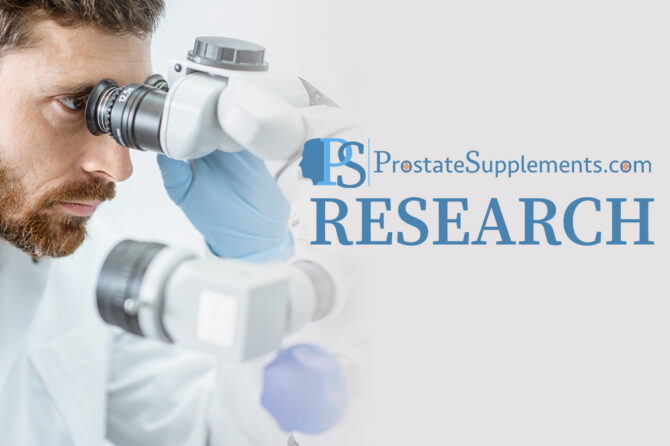
Mouse Ear (Hieracium pilosella): Health Benefits with Emphasis on Prostate and Urinary Health in Men
Mouse Ear, also known scientifically as Hieracium pilosella and colloquially as Hawkweed, is a perennial herbaceous plant native to Europe and parts of Asia but naturalized worldwide. Known for its woolly leaves and yellow flowers, Mouse Ear has been used in traditional medicine for centuries. Despite its humble appearance, this plant exhibits a surprising array of pharmacological properties, many of which hold significant potential for men’s health, particularly in the context of prostate and urinary system support.
Botanical Profile
- Scientific Name: Hieracium pilosella
- Common Names: Mouse Ear Hawkweed, Pilosella, Hawkweed
- Family: Asteraceae
- Plant Parts Used: Leaves, flowers
- Active Compounds: Flavonoids (apigenin, luteolin), triterpenes, coumarins, umbelliferone, and tannins
Historical and Traditional Use
Mouse Ear has long been used in European folk medicine, particularly by the Swiss and Germans, for:
- Treating kidney and urinary tract disorders
- Aiding wound healing as a poultice
- Managing bronchitis, asthma, and respiratory issues
- Acting as a mild diuretic and detoxifier
The traditional use aligns with many of the pharmacological findings validated by modern studies.
Health Benefits of Mouse Ear
1. Anti-Inflammatory and Antioxidant Effects
Mouse Ear contains flavonoids such as apigenin and luteolin, which are known for:
- Reducing inflammation
- Neutralizing free radicals
- Supporting systemic immune health
These properties are crucial in combating chronic inflammation, a key factor in the development of benign prostatic hyperplasia (BPH) and prostate cancer.
2. Prostate Health and BPH Symptom Relief
While direct studies on H. pilosella and the prostate are limited, its diuretic and anti-inflammatory propertiescontribute to:
- Reducing prostate swelling associated with BPH
- Alleviating lower urinary tract symptoms (LUTS) such as urgency, frequency, and weak stream
- Supporting detoxification of the urinary system, which is beneficial for long-term prostate maintenance
Traditional uses suggest that men who consume Mouse Ear regularly experience fewer urinary difficulties, a hallmark of aging-related prostate dysfunction.
3. Diuretic and Urinary Tract Support
Mouse Ear acts as a natural diuretic without the potassium-depleting effects of synthetic diuretics. This makes it suitable for:
- Reducing water retention
- Supporting urine flow
- Helping in flushing out toxins and preventing kidney stones
- Alleviating symptoms of mild urinary tract infections (UTIs)
This is especially helpful for men with prostate enlargement who may suffer from urinary stasis and increased infection risk.
4. Antimicrobial Properties
Some studies show that Hieracium pilosella extracts possess antibacterial and antifungal activity against pathogens such as Escherichia coli, commonly involved in urinary infections.
This supports its traditional use in cleansing the urinary tract, which can indirectly benefit prostate health.
5. Respiratory and Cardiovascular Support
While not directly related to men’s health, its expectorant properties and mild cardiovascular stimulation make Mouse Ear a potential adjunct for respiratory infections and circulatory improvement—beneficial in middle-aged and elderly men.
Ingestion Methods
1. Infusion (Tea)
- Dosage: 1–2 teaspoons of dried aerial parts steeped in hot water for 10–15 minutes
- Frequency: 2–3 times daily
- Use: Common for urinary and prostate support
2. Tincture
- Dosage: 20–30 drops in water, 2–3 times daily
- Use: Offers a more concentrated delivery of active compounds
3. Capsules or Dried Powder
- Standardized capsules or dried herb powder are available in some supplement stores.
- Dosage: Typically 300–500 mg, 1–2 times daily
4. External Use
- Crushed fresh leaves can be used as a poultice for skin conditions or localized inflammation.
⚠️ Precautions: Mouse Ear is considered safe in moderate doses, but high doses may irritate the kidneys in sensitive individuals. Not recommended for long-term use without professional guidance. Pregnant or breastfeeding women should avoid it due to lack of safety data.
Scientific Research and Data Overview
While still under-researched compared to more mainstream herbs like saw palmetto, existing studies confirm:
- Diuretic activity comparable to standard treatments without major electrolyte loss
- Anti-inflammatory action via inhibition of cytokine production and oxidative markers
- Antimicrobial potency, especially against UTI pathogens
Further clinical studies are needed to establish its direct efficacy on BPH and prostate cancer prevention, but traditional usage, biochemical composition, and observed effects make Mouse Ear a promising natural candidate.
Conclusion
Mouse Ear (Hieracium pilosella) is a versatile and underappreciated herb with potential therapeutic benefits for men’s health, especially in the realms of prostate support, urinary tract detoxification, and inflammation control. Its historical usage aligns well with modern health needs for aging men, making it a viable component of herbal wellness protocols when used responsibly.
Leave a reply

Leave a reply